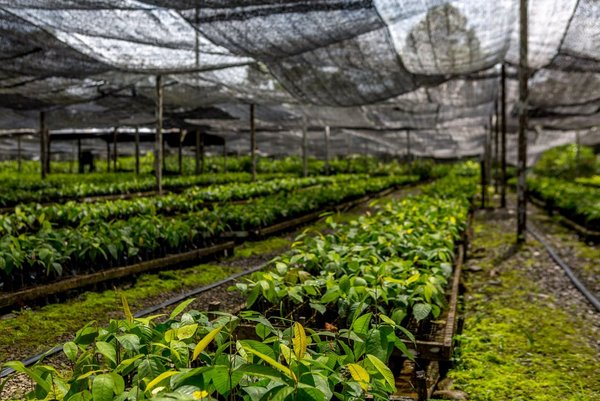 Read this article in French
Read this article in French- Share this article
- Subscribe to our newsletter
Restoration accelerates forest recovery
Actively restored forests recover above-ground biomass faster than areas left to regenerate naturally after being logged, according to a long-term study on Borneo lowland rainforest led by the University of Dundee, Aberdeen and ETH Zurich. The study was published in August 2020 in the journal Science.
The rainforests of Southeast Asia are among the fastest declining tropical ecosystems worldwide. Researchers from 13 institutions studied an area of tropical forest in Sabah, Malaysian Borneo, that had suffered heavy logging in the 1980s but was subsequently protected from further deforestation or conversion to agricultural land.
Forests under active restoration recovered 50 per cent faster
This long-term study paid special attention to the forest’s capacity to rebuild biomass. The researchers found that areas left to regenerate naturally recovered by as much as 2.9 tonnes of above-ground carbon per hectare per year. According to the scientists, this confirms that degraded forests can recover naturally if they get effective protection. More importantly, the research team found that areas of forest that underwent active restoration recovered 50 per cent faster, from 2.9 to 4.4 tonnes of above-ground carbon per hectare per year.
Commercial, selective logging in Sabah has been going on for decades, and has severely degraded large areas of the forest estate. While Sabah retains over 50 per cent natural forest cover (with almost half of this area being fully protected), relatively little of this forest is in pristine condition. Restoration – particularly in heavily logged lowland forests – is considered essential to maintain biodiversity, carbon sequestration and other ecosystem services.
Active restoration fosters biodiversity
Active restoration encourages naturally diverse forest, therefore it is much more beneficial for biodiversity than monocultures or plantation forests, the researchers point out. The approach involves cutting lianas (climbing plants that thrive in degraded forests, competing with trees and reducing seedling survival and growth) as well as weeding, and ‘enrichment planting’ of seedlings. The latter seeks to increase the valuable, native tree species in degraded forests that have been reduced through commercial logging.
(ETH Zurich/ile)
Read more at ETH Zurich website
Reference:
Philipson CD, Cutler MEJ, Brodrich PG, et al. Active restoration accelerates the carbon recovery of human-modified tropical forests. Science, published online 13 August 2020, doi: 10.1126/science.aay4490
See also Rural 21, Issue 4/2019: Forests under threat





Add a comment
Be the First to Comment